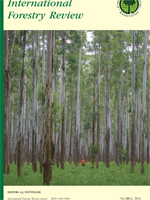The aim of the study was to evaluate the carbon storage capability of an unmanaged old-growth deciduous forest developing inside a Natural Reserve. Our research aims to emphasize how the conservative management, by determining the actual structure and species composition, resulted in a high carbon storage capability. The results highlight that the forest stores a large carbon amount (CTot = 418 Mg C ha-1) with the greater pool in the aboveground biomass and in the soil (42%). In particular, among the most abundant species, Populus spp. and Quercus robur are the major carbon sink of the forest, accounting for 31% and 63% of the forest aboveground biomass. In addition, the total economic benefits from carbon storage of the forest of 11 209 $ ha-1 was estimated. Thus, preserving this type of forest structure and tree species composition can ensure in the future the same forest contribution to the local carbon stock.
How to translate text using browser tools
1 December 2016
Carbon Stock Estimation in an Unmanaged Old-Growth Forest: A Case Study from a Broad-Leaf Deciduous Forest in the Northwest of Italy
M.U. Granata,
L. Gratani,
F. Bracco,
F. Sartori,
R. Catoni
ACCESS THE FULL ARTICLE

International Forestry Review
Vol. 18 • No. 4
December 2016
Vol. 18 • No. 4
December 2016
aboveground biomass
carbon storage
old-growth forest
unmanaged forest




